Seasons – February 2021
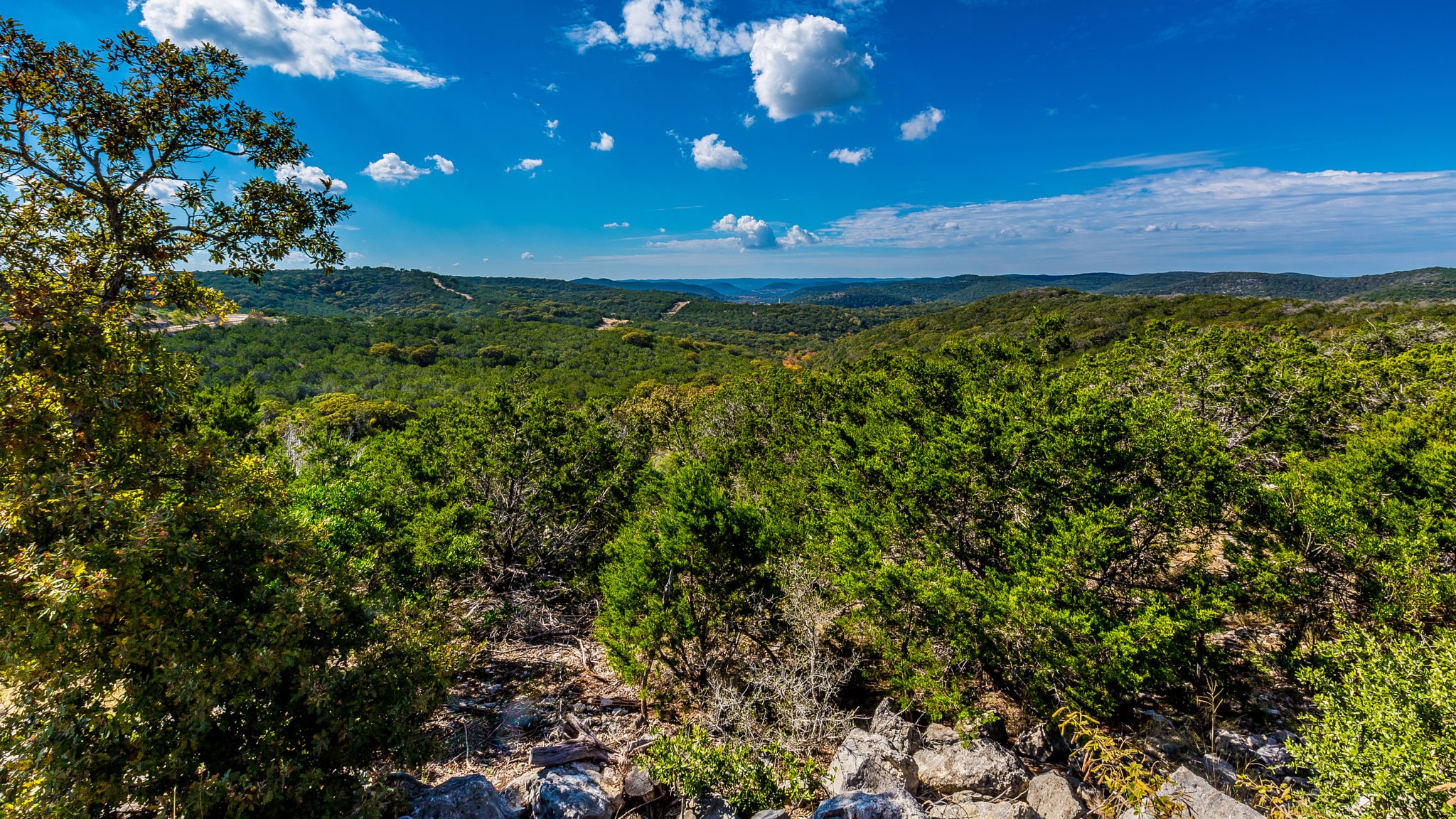
From the Plateau Land & Wildlife Management Team
Welcome back to another issue of Plateau’s Seasons newsletter, chalk full of considerations for landowners and the wildlife they manage for. In this issue of Seasons, we’ll be covering a range of considerations for conservation on your property, with blogs and articles from our expert team of biologists, region managers, sister company attorneys, and more.
Read about the Hays County Parks Bond, how you can create open spaces while protecting financial incentives, and introduction to our sister company Plateau Land Group, and more. Because an investment in your land and the wildlife that lives on it, is an investment in your family legacy and the preservation of Texas lands.
Until next Seasons,
The Plateau Team
Table of Contents
Protection of Open Spaces in Hays County with Passing of Proposition A
Wildlife Management Activity Reminder: Nest Boxes
Service Spotlight: FREE Wildlife Exemption Webinar Series
Creating Open Spaces While Protecting Financial Incentives
Field Notes: Pictures & Highlights of Properties in Wildlife Management
Rural Real Estate Reborn
News for Texas Landowners
Protection of Open Spaces in Hays County with Passing of Proposition A
By Nick Fisher, Region Manager of Plateau’s Central Texas Service Area
“The greatest threat to our planet is the belief that someone else will save it…” – Robert Swan
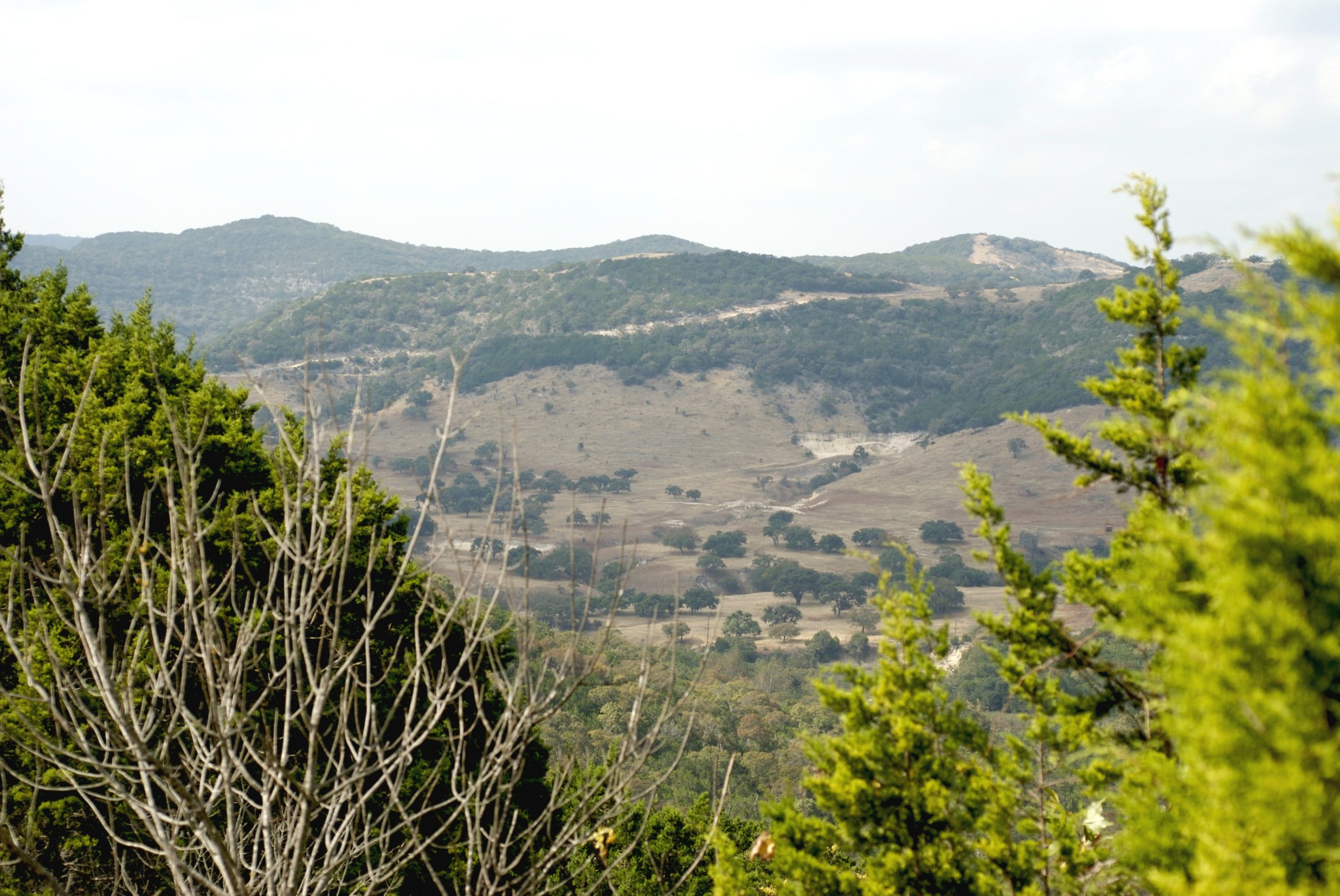
It doesn’t take much of your attention away from the constant stop and go traffic between Austin and San Antonio to notice the contiguous string of infrastructure that lines the roadway on both sides. Hays County alone has more than doubled since 2000 and continues to grow at about 3-5% each year. With an increasing population in the area, the demand for infrastructure begins to chip away at the natural lands and open spaces. This is a growing concern for the community but a plan of action has been set to conserve some of the open space left in the area.
In November, almost 70% of the voting population in Hays County voted for the Hays County Parks Bond, Proposition A which will provide $75 million of funding for preserving our fragile and unique section of the Edwards Plateau. We will not have any tax impact, but instead, funding will come from the county budget and other organizations and participating municipalities.
Proposals for the Bond were a combination of flood mitigation, water quality, parks, and endangered species habitat projects submitted by municipalities, nonprofit organizations, and land trusts to the Hays County Parks and Open Space Advisory Commission (POSAC). Projects ranged from a regional skate park in Dripping Springs to a section of the Violet Crown Trail to Cape’s Fishing Pond in San Marcos.
Protection of Open Space & Wildlife
The area surrounding Austin has been the fastest-growing metro area in the nation for 10 years in a row. The once pristine, Edwards Plateau ecoregion where horny toads roamed and federally endangered golden-cheeked warblers nest, once was covered in mixed hardwood forests spotted with heritage oaks and mature Ashe junipers. The conservation and preservation of these lands can be the difference in maintaining breeding populations of our very own native Texas species.
Beyond the protection of the land for the wildlife that inhabits it, this proposition will also provide recreation areas for the public to enjoy river access and nature trails. The paradox of wildlife management is that for humans to want to preserve the natural world, we have to get outside and enjoy these natural areas and when we begin to venture into natural areas, they become less and less natural the more that they are visited. Even so, providing areas with nature trails and designated recreation areas mostly protects the rest of the area around them at the expense of a small area being heavily trafficked.
Proposed Projects
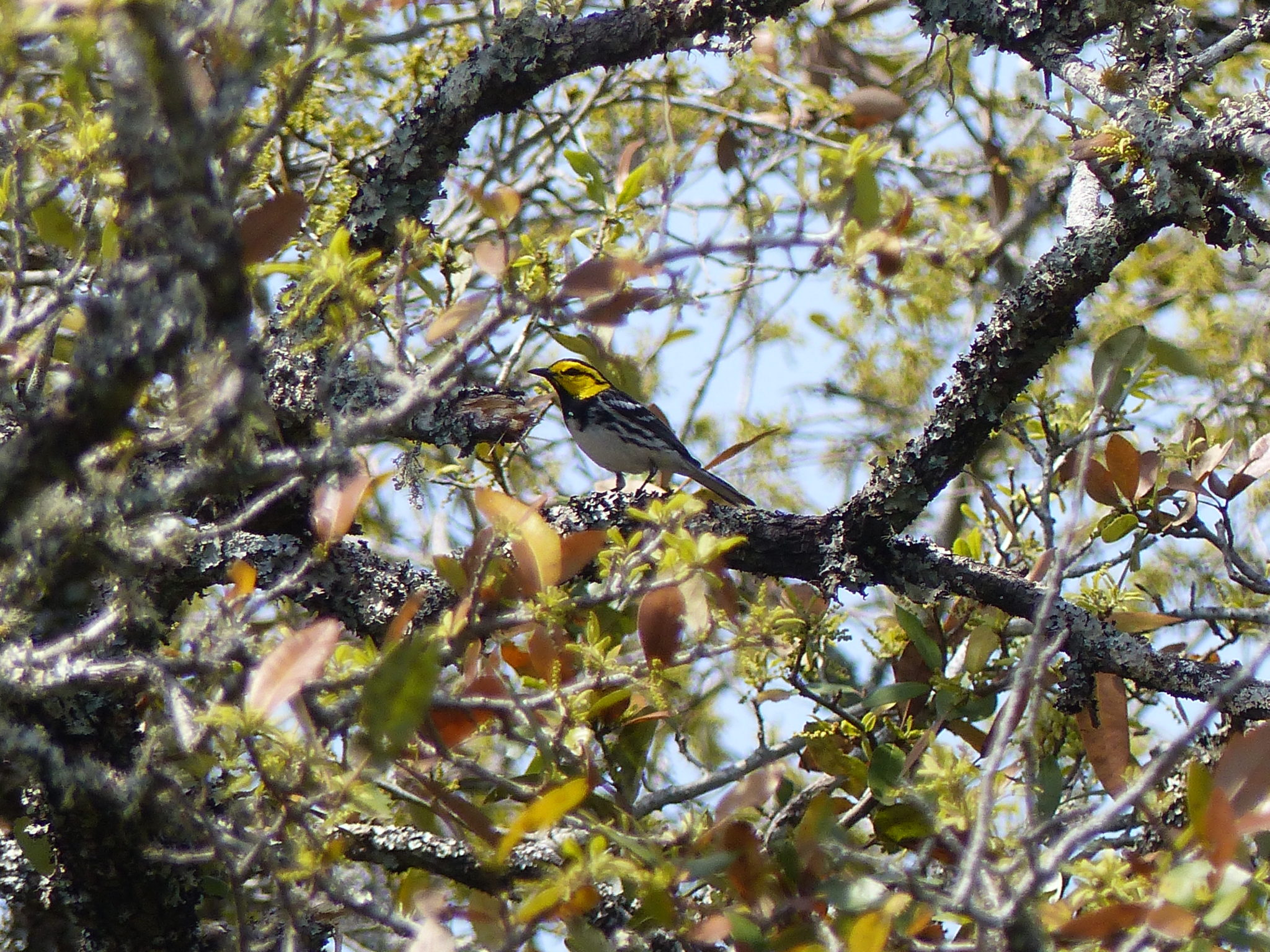 Some of the projects may take years to complete, but others are ready to go once the land is purchased. The pristine Sentinel Peak Park and Preserve, which encompasses some 500 plus acres of juniper Canyonlands and potential golden-cheeked warbler habitat near RR 32 at the edge of Hays and Comal counties, has some pre-existing trails that will be open to the public seasonally.
Some of the projects may take years to complete, but others are ready to go once the land is purchased. The pristine Sentinel Peak Park and Preserve, which encompasses some 500 plus acres of juniper Canyonlands and potential golden-cheeked warbler habitat near RR 32 at the edge of Hays and Comal counties, has some pre-existing trails that will be open to the public seasonally.
One of the top-tiered projects is for the open space and Clean Waters Preserve at Purgatory Creek in San Marcos. The 1,000 plus acre conservation easement offers some untouched habitat, watershed, water quality, recharge, and flood mitigation necessary for the Edwards Aquifer and the sensitive karst features found in these areas. The land adds to the Purgatory Creek Natural Area, the La Cima Parkland, and the Hays County La Cima Preserve.
With record voting numbers in November, some 71,000 people voted for the proposition, and they, along with their families are going to benefit from the open spaces that are preserved along with our wild inhabitants that have called it home long before we did. As the POSAC quoted, “We owe it to future generations of Texans to preserve special places in Central Texas so they can enjoy them as we have.”
For more information about Hays County, Proposition A, or to learn if your land qualifies for Hays County or other available funding sources, I encourage you to contact our sister company, Braun & Gresham at (512) 894-5426 or [email protected].
Back to TopBack to Top
Wildlife Management Activity Reminder: Nest Boxes
By Kameron Bain, Landowner Account Manager
Plateau Recommendation: Time to check your nest boxes
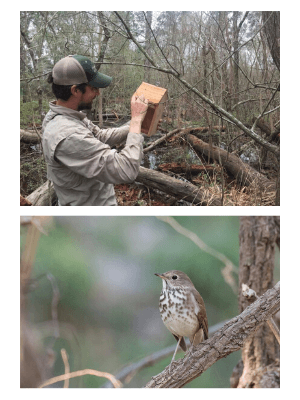 Clean out your nest boxes: clean out any debris or leftover nesting material from the previous year
Clean out your nest boxes: clean out any debris or leftover nesting material from the previous year- Fix damage: fix any damage made by weather, old age or other animals
- Replace or purchase additional nest boxes: if a nest box is damaged beyond repair, replace it. Plateau offers an array of affordably-priced, Texas-made nest boxes
- Ensure boxes have a clear entryway: always make sure branches aren’t obstructing entry for birds to get in or out of the nest box, and if there are, be sure to trim those interfering branches to allow access
- Map out nest box locations: mapping out your nest box locations can help you manage your wildlife management activities and reporting. Hiring Plateau to install your nest boxes simplifies your reporting by capturing each nest box location with a GPS waypoint
- Document your activity: documentation is something you will hear us mention a lot. To prove your activities to the appraisal district, take pictures when cleaning out your nest boxes, make notes of the dates you checked them, and document when the boxes are replaced
It’s easy to get behind – we’re here to help answer questions or do the work for you! Contact us at (512) 894-3479 or [email protected] to schedule a nest box cleaning or installation.
Service Spotlight: FREE Wildlife Exemption Webinar Series
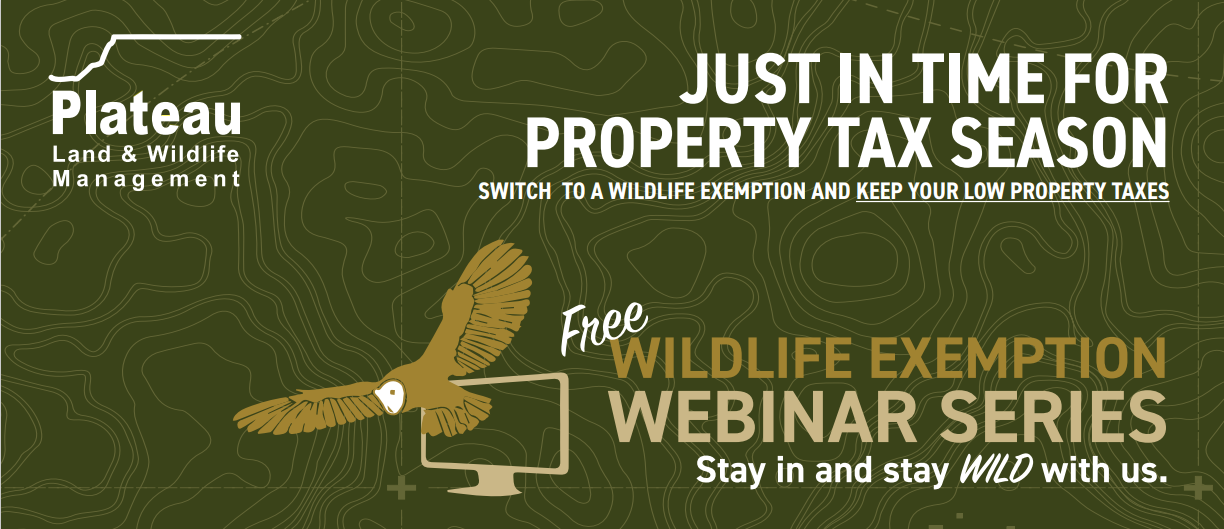
Learn About Making the Switch to a Wildlife Management Exemption:
Whether you’re a new landowner, already in Ag or Timber, or currently have a Wildlife Management valuation, everyone is invited to join us for our FREE Wildlife Exemption Webinar Series. Connect with experts and learn how to make the switch to a Wildlife Management valuation.
Topics Include:
- Wildlife Management Exemption
- Wildlife Management 101
- Moving from Ag or Timber
- Qualifying Wildlife Activities
- Property Taxes
- Wildlife Management Plans
- Annual Reports
- County Requirements
- Issues Related to Texas Regions
- Open Questions & Anwers
- *Early Bird Presentations on Select Dates: Estate Planning, Conservation Easements, and Recreation & Asset Protection
REGISTER EARLY!
If you have questions or need assistance registering for a webinar, please contact us at (512) 894-3479 or email [email protected].
Conservation Easements: Creating Open Spaces While Protecting Financial Incentives
By Kathryn Tancig, Braun & Gresham Attorney and Counselor
How does a landowner protect their land, one of their most valuable assets, while protecting their financial interests? A conservation easement may be the answer.
Sale of Development Rights
Landowners can monetize their development rights by selling a conservation easement to local, state, or federal agencies or organizations.
Landowners whose properties are located in priority conservation areas, as determined by government agencies tasked with protecting or preserving water quality, endangered species habitat, or open spaces, can market their easement rights to various agencies and funding programs. Once a conservation easement deal is made, the landowner will receive the sales proceeds from the purchasing entity at closing.
Conservation easement purchases typically involve cash payments in an amount substantiated by an appraisal process. If funding is only available for a portion of the full fair market value of the conservation easement, the remaining easement value left unpaid is often considered a charitable contribution or tax deductible under the federal tax code.
As local communities continue to pass bond measures and prioritize open space budgets, more of these sales will be possible. Braun & Gresham tracks these funding sources for landowners, so please give us a call at (512) 894-5426 or send us an email if you are interested.
Income Tax Deductions
When a donated conservation easement qualifies for federal income tax benefits, landowners can deduct 50% or more of their adjusted gross income in the tax year the easement deed was conveyed and recorded in the public records.
Landowners who wish to conserve their property may choose to finalize their conservation easement transaction during a year in which they know they will have a significant income event. If the conservation easement value or available deduction exceeds the annual limit, any unused easement value can be carried forward and deducted against future income for a period of up to 15 years.
When a landowner commits to protect their land from future development, conservation easement deductions can be used to unlock the value of that landowner’s development rights.
Estate Planning Tool with Tax Benefits
Selling or donating a conservation easement also reduces the basis or value of the land for estate tax purposes. Landowners with estate tax concerns can protect their heirs and reduce their taxable estates by restricting large land assets with conservation easements.
Landowners retain all underlying ownership and access rights, which can be conveyed to future generations or buyers. Because a conservation easement severs or separates the development rights from the rest of the ownership rights that come with the land, the value associated with these development rights is transferred to the receiving entity and removed from the taxable estate.
For example, if you wanted to gift a ranch or land asset to your children, but the full value of your estate would generate costly tax liabilities for them upon your passing, part of your estate plan could include the conveyance of a conservation easement during your lifetime, which would protect your heirs and reduce the value of your taxable estate by reducing the basis of the land.
For more information on Conservation Easements, please contact attorney Kathryn Tancig at (512) 894-5426 or [email protected]
Field Notes: Pictures & Highlights of Properties in Wildlife Management
Ever wonder how Wildlife Management is benefiting landowners’ property and the wildlife that live on it? Here are some photos and highlights, from Plateau’s field staff and game cameras, of successes and small victories our landowner customers are seeing on their property.
Quail in Travis County
Here’s a recent picture, captured by a game camera, at one of our Quail & Small Wildlife Stations in Travis County. Who even knew there are this many quail in Travis County? Do you want to know what these folks did to promote quail and get these kind of results? Give us a call at (512) 894-3479!
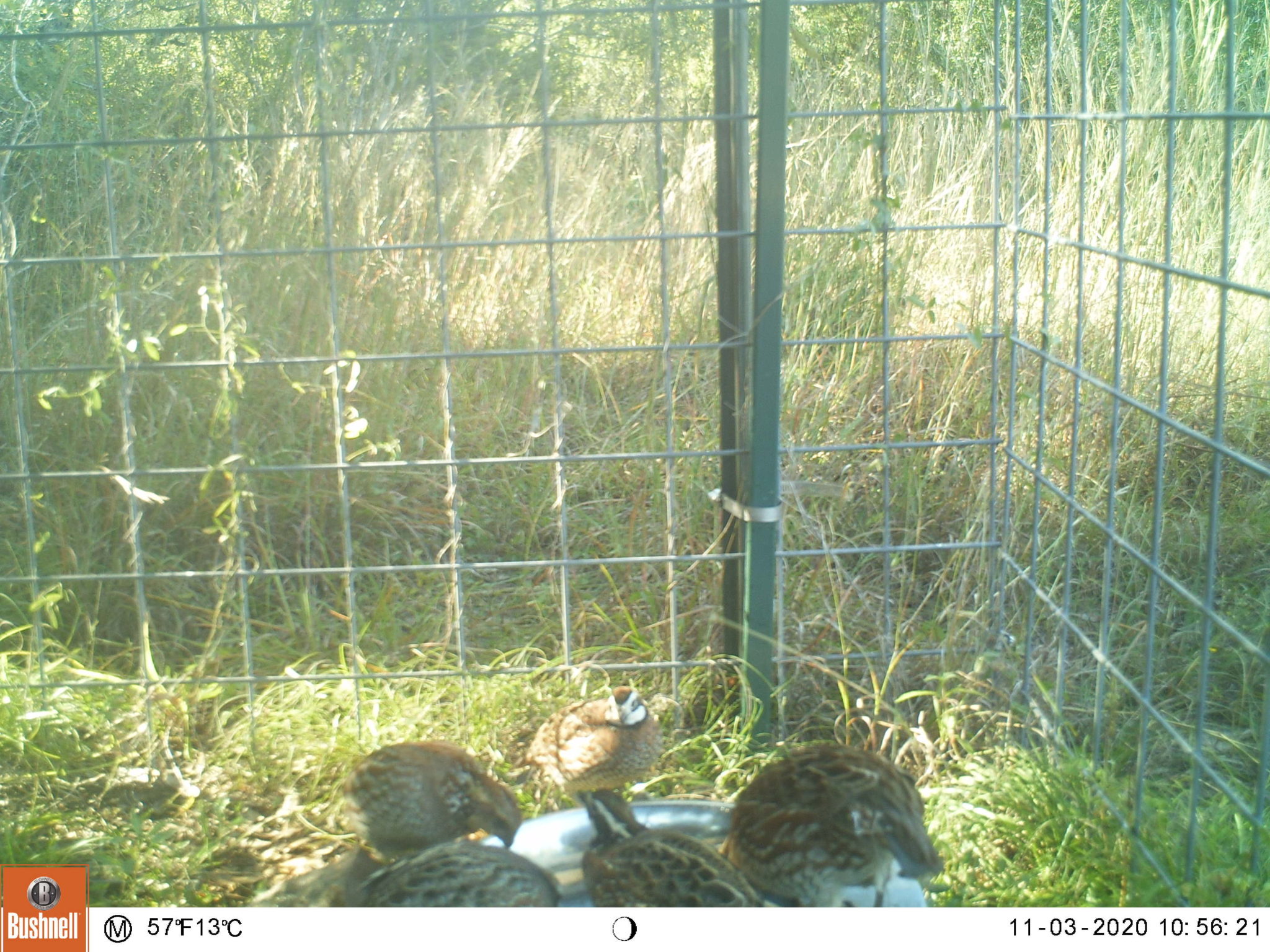
Turkey in Blanco County
A Blanco County landowner sent us this picture of turkey using their Plateau Wild Bird & Turkey Feeder. Do you know how to place your feeder to get the best results? Not everyone does. Give us a call if you have questions: (512) 894-3479
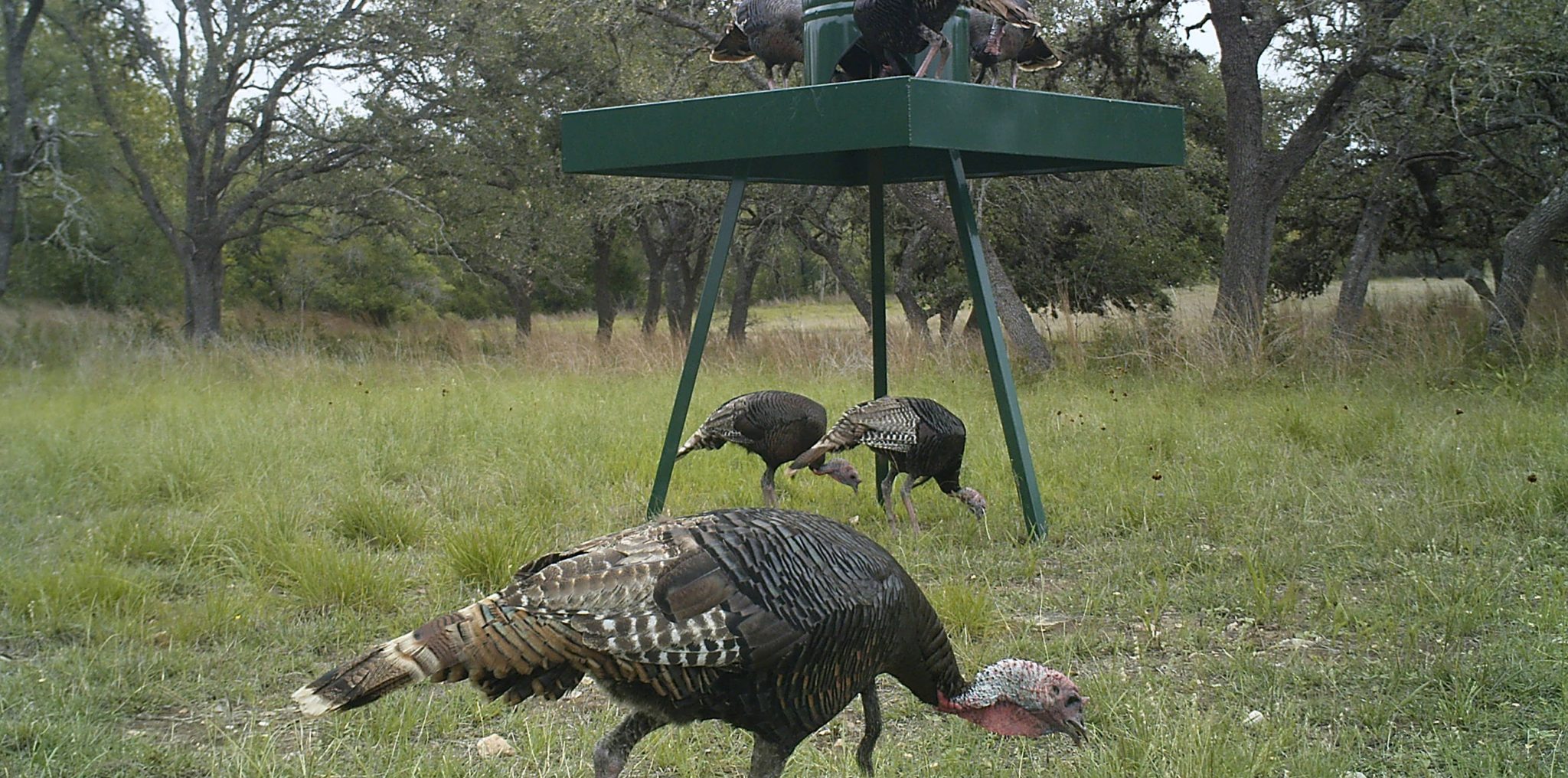
Benefits of Strip Discing
Strip discing at the right time of year can be beneficial for small wildlife by creating diversity in grass structure, promoting wildflowers and other broadleaf plants, and increasing usable space. Check out this photo of a landowner’s property who incoporated strip discing in their Wildlife Managment Plan – they saw a resurgence of bluebonnets! For more information on how to see similar results, give us a call at (512) 894-3479.
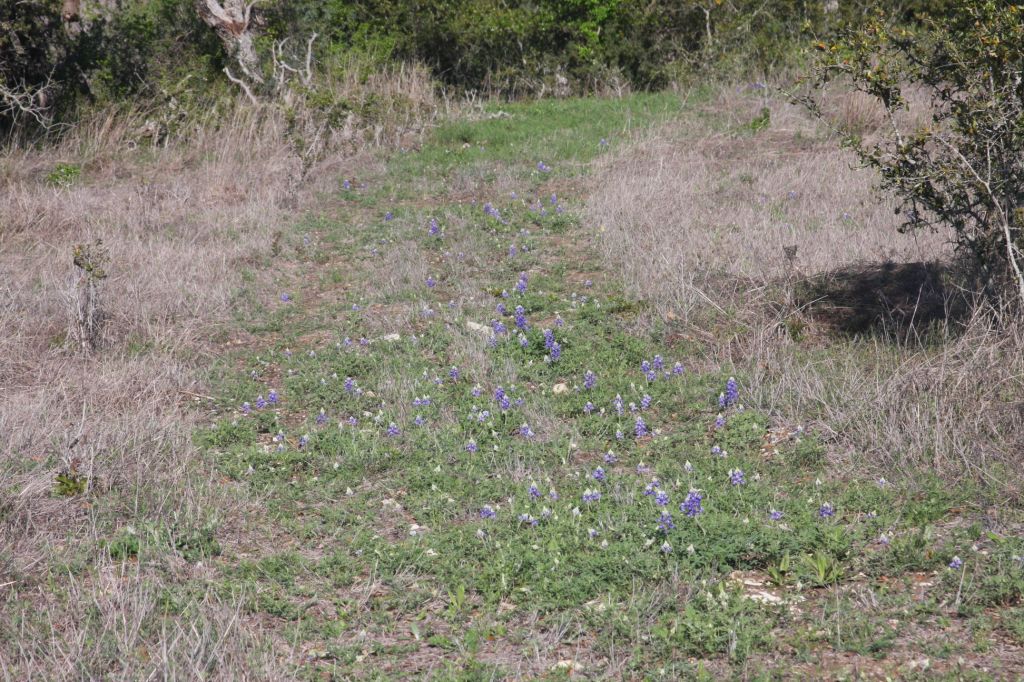
Sleeping Fox on Game Camera
Placing game cameras on your land can give you an idea of what wildlife frequent your property. Check out this adorable photo of a sleeping gray fox that was captured on one of our landowner’s game camera. To learn more about the proper placement of game cameras for your property in Wildlife Management, give us a call at (512) 894-3479!
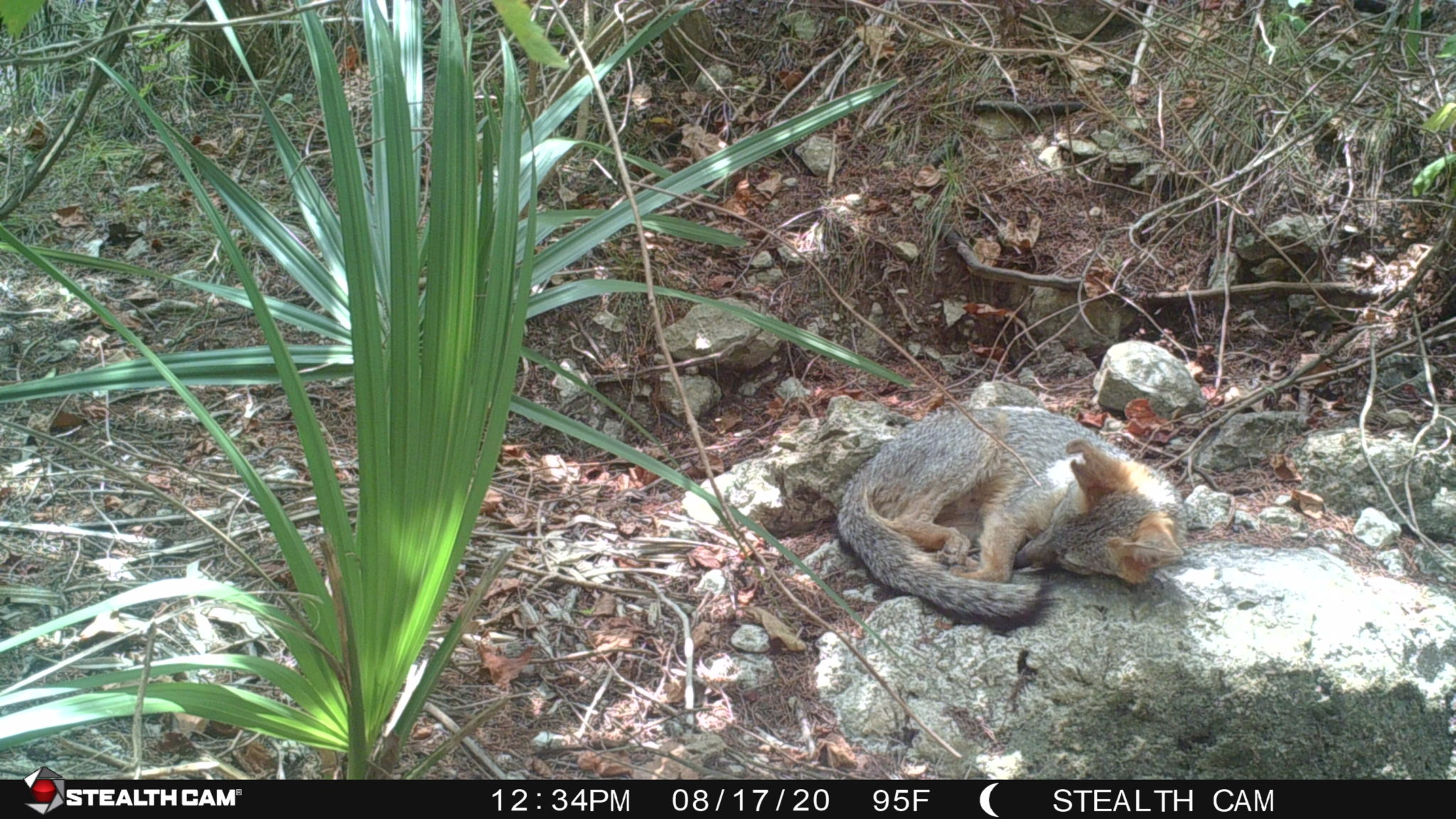
So many of you are out there doing great work. We appreciate you, and so do the native wildlife on your property and across Texas. Large or small, you are making a difference. Look for more great examples of wildlife and landowner successes and victories in upcoming Seasons Newsletters!
Rural Real Estate Reborn

As we enter 2021, Plateau Land Group has transformed itself to better serve our rural landowners in the buying and selling of their property.
Today, instead of competing with traditional brokers, we’ve adapted by offering advisor solutions that help our landowners select the right broker with specific expertise, and other services that potentially help you achieve more profit in the sale of your property.
Looking to buy land in Texas? We admit, searching for rural land can be difficult. Our relationships and knowledge allow us to offer unique services that can help you scout and plan your next land purchase.
Selling Land
The market for rural land in Texas is at a premium and for landowners seeking to sell their land we offer the following services:
- Broker Vetting based on performance criteria
- Current Property Value Assessment
- Pre-Sale Recommendations
- Property Tax Assessment and Recommendations
- We support you in your relationship with your broker
Buying Land
Unlike traditional brokers, we aren’t limited by geography or available listings, plus we have a statewide perspective of the real estate market. In fact, we have experts and attorneys that can assist in even the most complex land purchases.
- Property Tax and Rural Consulting
- Expertise in Complex Land Investments
- Your advisor remains focused solely on your requirements, can connect you with unlisted landowners, and is not limited to geography or available listings
Visit us at PlateauLandGroup.com to learn more about our services and how we can help you in your next rural real estate transaction in Texas.
Meet Randy Lee
Heading the PLG team, broker Randy Lee has over 45 years of real estate experience in Texas, and an extensive network of industry contacts and clients. He has been TREC licensed since 1974 and obtained his broker license in 1976. Working for the Texas House of Representatives Committee on Business and Industry, he assisted in the rewrite of the current Texas Real Estate code in 1975, which moved the real estate business into the world of true professionalism.
He is a graduate of the McCombs school of business at the University of Texas at Austin with a BBA in Finance. He has worked at a major Houston bank in commercial lending, for the Texas House of Representatives, has learned most of the county seats traveling in Texas when he was the executive director of the Texas 1986 Sesquicentennial Commission, and is also the owner of Randy Lee Public Affairs, LLC.
Randy purchased land in Bastrop County in 2007, which is now the Red-tailed Hawk Ranch. His experience in ranch operations and the selection criteria for rural property are based on firsthand knowledge and practice.
Success Story: Rural Real Estate Can Be Complex
“A client of our family of companies recently needed help selling 100 acres in Wise County which she and her cousin had inherited. The property had no legal access and was sandwiched between two other properties owned by the same landowner who had a hunting and grazing lease. We evaluated the situation and approached the neighbor to work out a purchase agreement, in addition to contacting other adjoining landowners to possibly find alternative access.
Furthermore, we found conflicting information as to the legal description and, upon our request, the title company issued a title commitment with the correct legal description. There were several probate documents missing that needed to be filed, so we worked with Braun & Gresham to find, file and record those documents in the correct county. A survey was needed because none existed and a question about the placement of a fence was required. After contacting a qualified local surveyor (who had to cancel due to COVID), we found a second surveyor who finally agreed to survey the unique property.
After considerable diligence, which is quite typical for rural land properties, the transaction is near completion.
As with this example, real estate transactions can be detailed and difficult, and no two are exactly alike. That is why it’s important to have a team of experienced advisors guiding the way.”
News for Texas Landowners
Donor Gives Dripping Springs 300 Acres to Create Park
Article by Shonda Novak with Austin-American Statesman
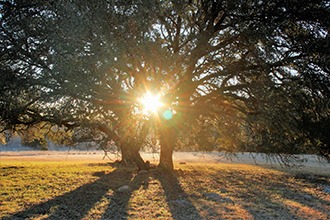
It’s not every day that a city gets a $5.7 million parkland donation.
The city of Dripping Springs just did — specifically, 300 acres to create a park that will be almost 30 acres bigger than Austin’s beloved Zilker Park.
Earlier this month, Dripping Springs City Council accepted a donation deed for the 300 acres from Austin developer and philanthropist Dick Rathgeber and Rathgeber Investment Company LTD.
The property is at the confluence of Barton Creek and Little Barton Creek, and is adjacent to the Headwaters subdivision…
Financial, Ecological Benefits of Conservation Easements on Working Lands
Blog by Paul Schattenberg with Texas A&M AgriLife
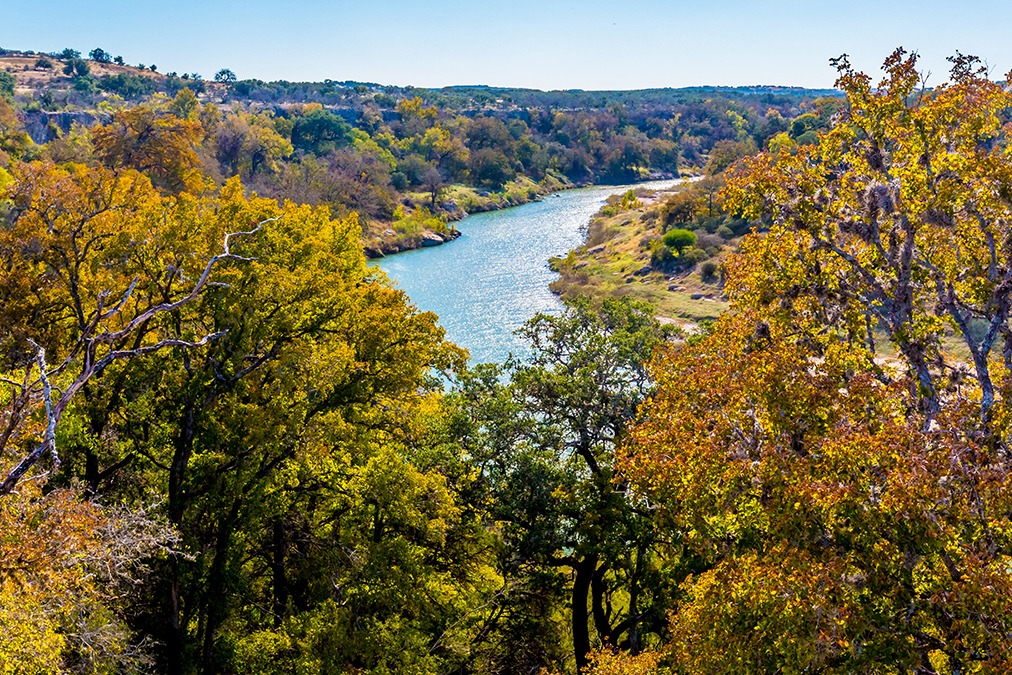
A recent report by the Texas A&M Natural Resources Institute, Texas Water Resources Institute and Texas Land Trust Council shows state-funded conservation easements in Texas provide numerous financial and ecological benefits.
The purpose of the 2020 Evaluation Report was to examine the benefits of conservation easements established on privately-owned lands under the Texas Farm and Ranch Lands Conservation Program, TFRLCP, a state-funded program that purchases development rights from willing and interested landowners.
“Conservation easements are a voluntary agreement between a landowner and a qualified non-governmental organization or government entity,” explained Texas A&M Natural Resources Institute director Roel Lopez, Ph.D., San Antonio…
TSSWCB Receives Additional Funding from USDA to Address Feral Swine in Texas
Article by Nueces Country Record Star, featured in Alice Echo-News Journal
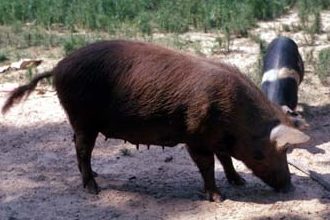
The United States Department of Agriculture (USDA) recently announced it is awarding approximately $1.5 million to the Texas State Soil and Water Conservation Board (TSSWCB) to fund three additional pilot projects to control feral swine in Texas.
These projects are a part of the Feral Swine Control Pilot Program (FSCPP), which is a joint effort between USDA-Natural Resources Conservation Service (NRCS) and Animal and Plant Health Inspection Service (APHIS) to help address issues that feral swine pose to agriculture, ecosystems as well as human and animal health.
Feral swine cause a high level of economic, biologic and natural resource damage. The species are also a threat to Texas waterways and ecosystems as the population of the feral swine rapidly increase…
How Texas Hunting Went Exotic
Article by Wes Ferguson with Texas Monthly
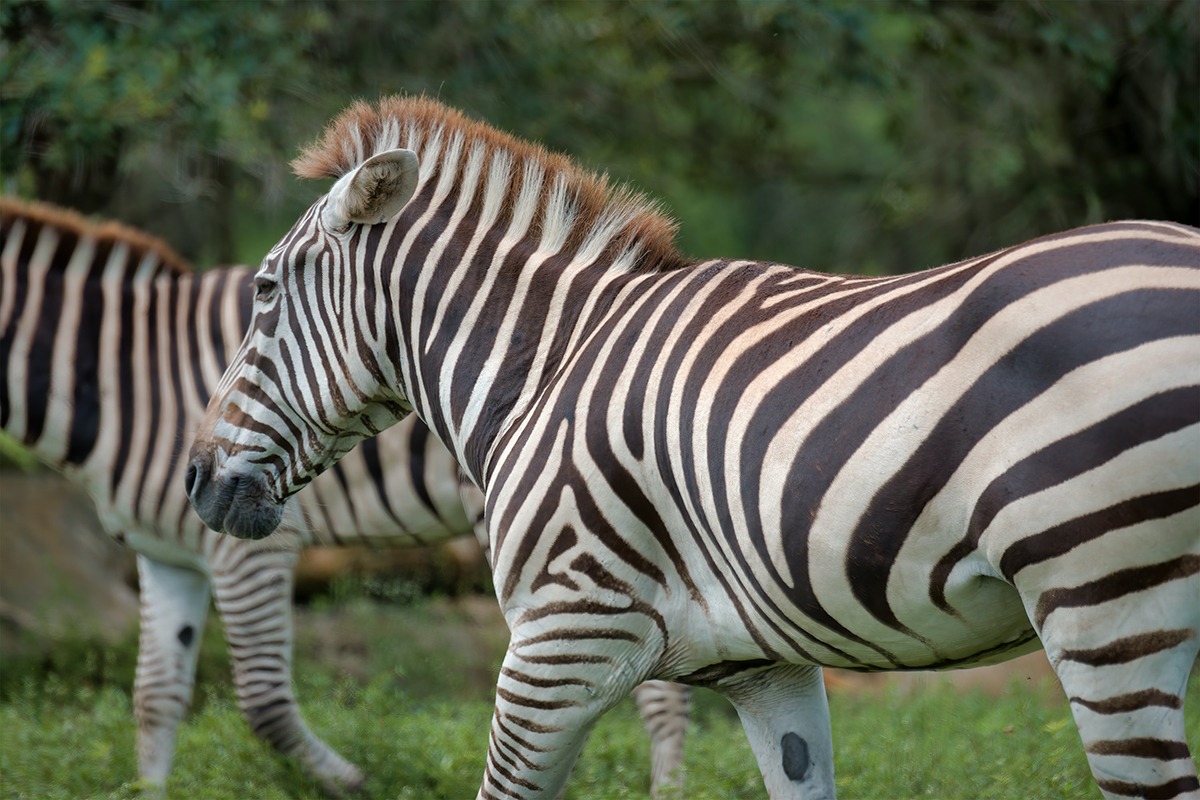
The main entrance to the Ox Ranch, about two hours west of San Antonio, has the look and feel of many entryways to grand Texas spreads. There’s a coyote fence made of cedar posts, a big metal gate controlled by a keypad, and, atop the arch you pass under, a black-steel tableau of wildlife, including two bucks with impressive racks and a wild turkey trotting by a patch of prickly pear cactus. It screams native Texas. But go beyond the gate, as I did one hot and hazy afternoon last summer, and you’ll soon come face-to-face with strange and majestic creatures transplanted from other worlds.
The first critter I spotted was a red stag, one of the planet’s largest deer species, native to Europe and Central Asia, with velvety antlers that branched toward the sky. He was contentedly chewing his cud as he lay next to a tall fence enclosing the 18,000-acre property—a jarring sight that just began to prepare me for the mile-long drive to the ranch headquarters…
Fence Law Webinar and Interview
Blog by Tiffany Dowell Lashmet for Texas Agricultural Law Blog
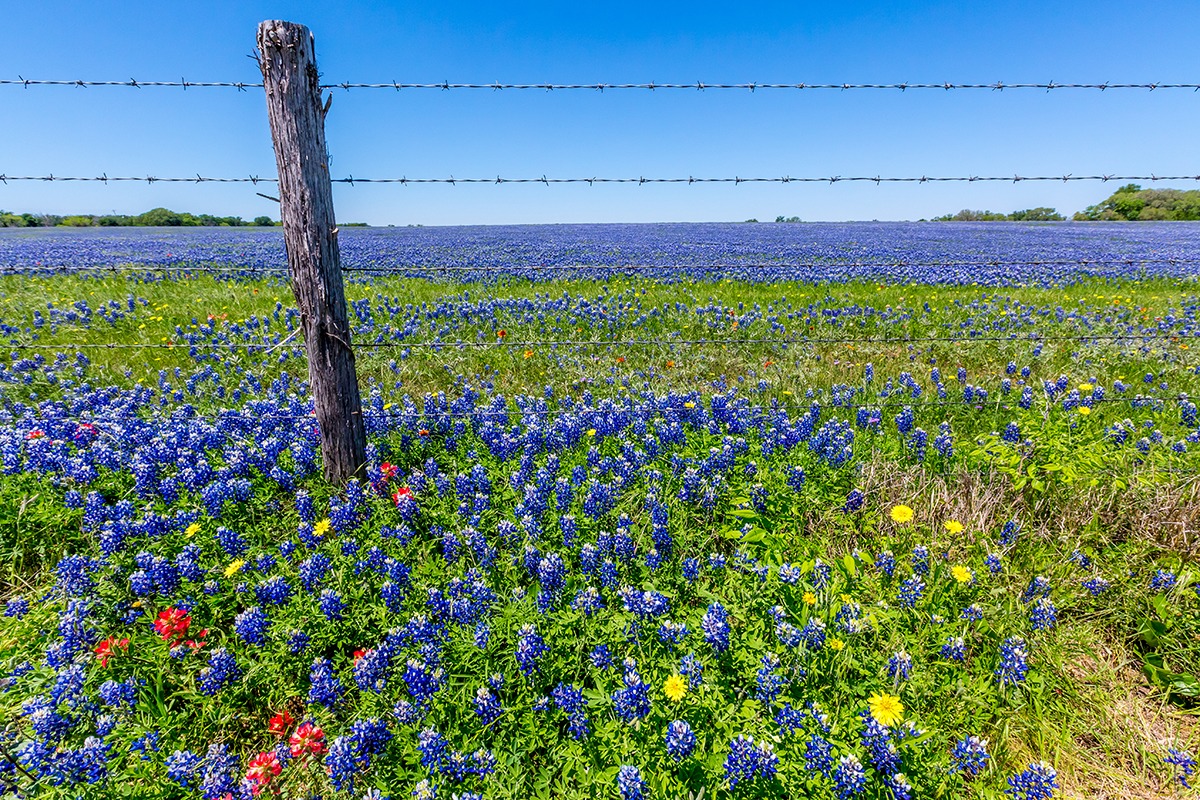
Fence law is one of my favorite topics. If you own or lease land, this is likely a topic that interests you as well! I’ve recently had a couple of opportunities to chat about fence law and I wanted to share those with you.
First, I was invited to present on Texas Fence Law for the TAMU AgriLife Extension Range Webinar Series. This presentation focuses specifically on fence law in the Lone Star State. To watch, click here.
Second, I was a guest on my friend Cari Rincker’s show, Ag Law Today. Cari interviewed me about fence law generally and our conversation would be applicable nationwide. To watch, click here…




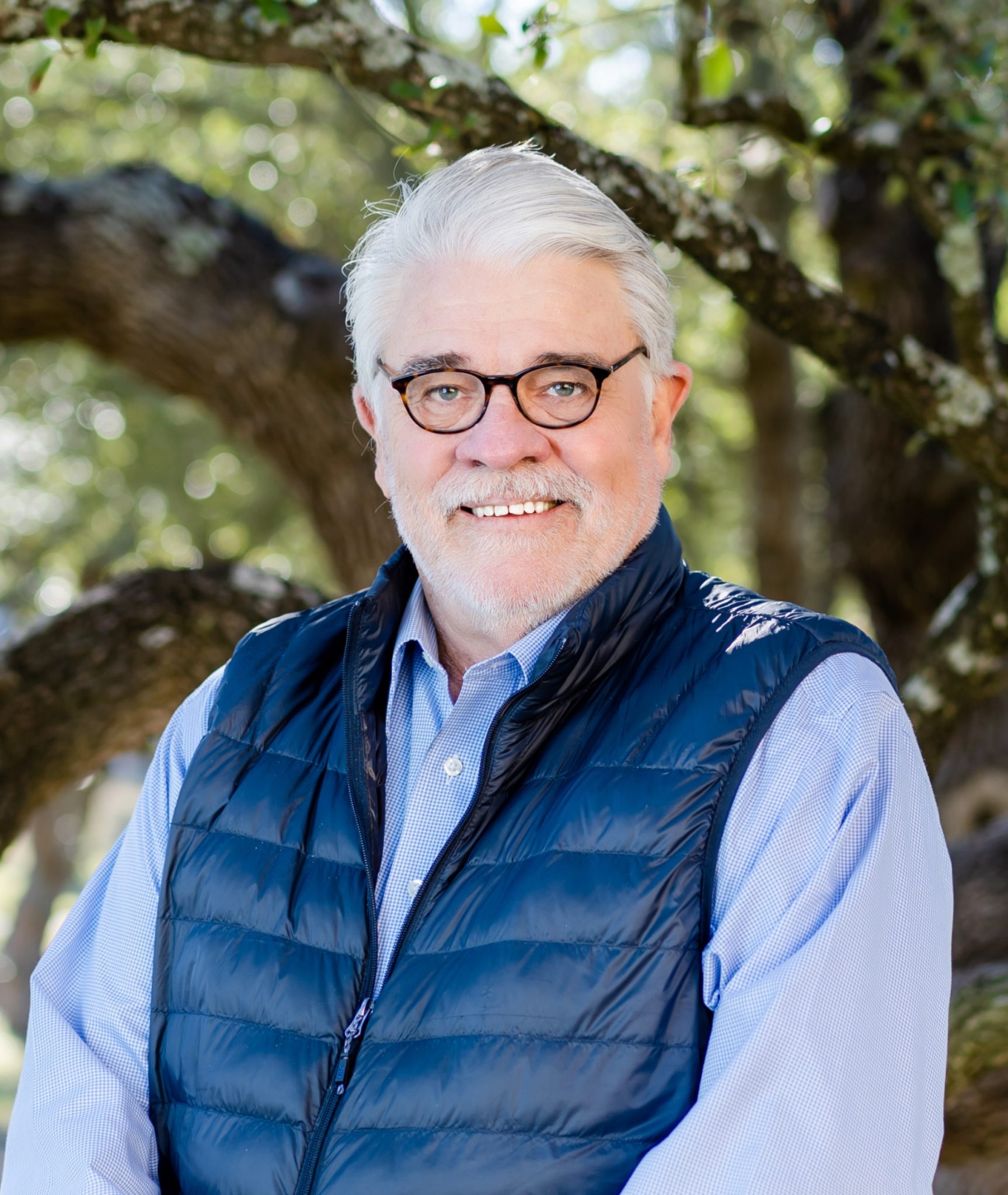



Sorry, the comment form is closed at this time.